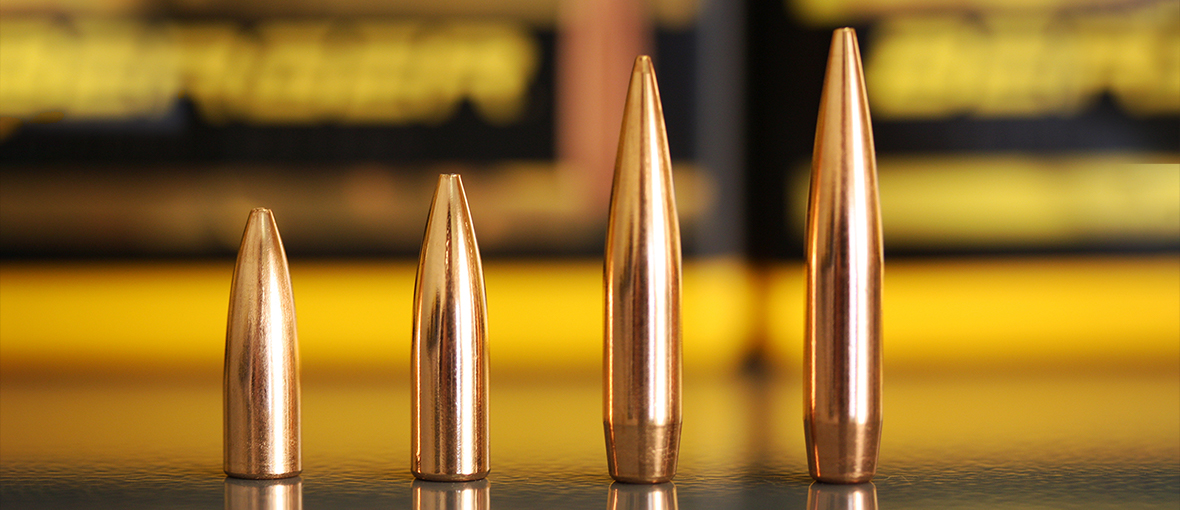Various 6mm bullets pictures left to right: 64gr BR Column Target, 80gr Flat Based Varmint, 109gr Long Range Hybrid Target, and 115gr VLD Target
A Bullet’s Ballistic Coefficient is comprised of 3 basic components: Weight, Diameter, and Form Factor. The weight and diameter of the bullet combine to determine the bullets sectional density; that’s the amount of mass packed behind the frontal area of the bullet. Then form factor is what describes how streamlined the projectile is. A bullet with a long pointy nose and a boat tail will have less drag, and a lower form factor, than a blunt, flat based bullet. In particular, form factor is a number that relates the drag of a bullet to the drag of a standard such as G1 or G7. G7 form factors for long range bullets are from 0.95 (low drag) down to 0.88 (very low drag) for most typical long range bullets. The lowest drag projectiles made on lathes with very aggressive shapes, like our solid bullets, can have G7 form factors as low as 0.80, but that’s pretty rare.
Of the 3 elements that make up BC, form factor is the best way to increase BC because you can improve BC without increasing weight. Adding weight to increase BC depresses your muzzle velocity so there’s a trade-off. However, if you simply lower the drag of the bullet (lower form factor), you retain a high muzzle velocity while improving the BC.
If you compare the new 6mm 109 Grain Long Range Hybrid Target bullet, which has a form factor of 0.906 and a G7 BC of 0.292, to the 6mm 115 Grain Very Low Drag Target bullet, which has a form factor of 0.956 and G7 BC of 0.291, you can see how modern streamlined designs can achieve higher BCs even with lower weights.
Because form factor is tied to the drag of the bullet, and how it relates to the standard projectile, it’s the part of BC that changes with velocity. Bullet weight and diameter don’t change with velocity but the way a specific bullets drag compares to the standard does. So this is where the velocity dependence of BC comes from.
Naturally bullet makers want to make bullets with the lowest possible form factors, but there are problems if you try to make a bullet too streamlined. Stability issues can arise if you make the nose or tail too long. This leads to high variation in drag from shot-to-shot, which is ultimately more harmful to success at long range than the benefit of having a low form factor.
Want a bullet that has both a high BC and a consistent BC? Learn more about our new Long Range Hybrid Target bullets.
